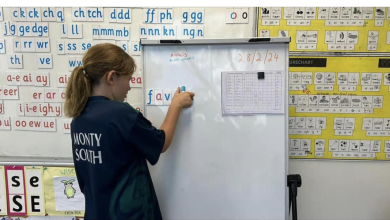Early NAPLAN results show promise, but we don’t know the full impact of COVID school closures yet
The early NAPLAN results for 2021 released today suggest the average impact of COVID school closures on literacy and numeracy in 2020 has been relatively small.

This was the first NAPLAN test since students moved to remote learning, and involved 1.2 million students in years 3, 5, 7 and 9.
The results show the national average for literacy and numeracy in 2021 has held up fairly well despite last year’s disruptions. There has been little change in the NAPLAN average results in 2021 compared to 2019 in all states and territories, including Victoria, which had the longest period of remote schooling in 2020.
To understand how well children are doing at school, it is important to look at the progress of students’ learning over time, not just where they are at any one point in time.
According to our student progress metric for NAPLAN, Victoria’s progress in literacy and numeracy is generally in line with the national average over 2019-21. We can also see progress at a national level for 2019-21 was similar to historical rates of progress.
These results are a testament to the hard work of students, parents, teachers and school leaders around the country. But it is too early to claim victory.
We will have to wait until the full NAPLAN data is released in December to understand what the impact has been on vulnerable students, in particular.
It’s also important to remember that NAPLAN only tests literacy and numeracy. Gaps that may have emerged in other parts of the curriculum, such as science and the humanities, aren’t picked up in this data.
Nor do these results help us understand the impact of school closures on broader students’ social development and mental health.
They don’t change the fact governments should be carefully planning how to get kids back to class safely, and as soon as possible.
Disadvantaged students may have fared worse
Students around the country missed a significant amount of school in 2020, especially in Melbourne where some students missed around 21 weeks of school. In New South Wales, schools were closed for around seven weeks.
Many disadvantaged students are likely to have found remote schooling harder than other groups. Our 2020 report estimated the achievement gap between advantaged and disadvantaged students widens at up to triple the rate when kids are trying to learn at home rather than in regular class.
Students most likely to be impacted by remote learning are those from low socio-economic families, Indigenous backgrounds or remote communities, as well as those with poor mental health, disabilities and special learning needs.
Students in the early years who are still developing foundational skills in reading and writing are also at risk of falling behind.
Emerging international data suggests COVID school closures have had significant negative impacts on student learning in some countries and that disadvantaged students have suffered most. The findings of different studies vary, but one study from Holland estimates learning loss is 60% greater for struggling students.
Given the potential negative impacts for vulnerable students, the NSW and Victorian governments made significant investments in new tutoring programs to help these students catch up. These programs have been in place since the start of 2021.
Opening schools safely should be a national priority
The early NAPLAN data is promising, but our leaders need to stay focused on getting children back to school.
For disadvantaged students in particular, there may be other negative impacts on learning we don’t yet know about.
Academic performance aside, there are broader implications of sustained school closures. There are real concerns about the potential impacts on students’ mental health and social development.
Nor is it clear what the cumulative effects of school closures may be on students or teachers. As remote schooling continues in Victoria and NSW and now the ACT, fatigue is setting in.

The Murdoch Children’s Research Institute has shown closures are associated with increased harm to children’s physical and mental health – and welfare – due to social isolation, increased anxiety, neglect, or even abuse. These findings are reinforced by growing overseas evidence.
The COVID pandemic continues to upend the daily school routines for millions of young Australians, interrupting their learning, development and friendships.
The NAPLAN results give us reason to hope that with hard work from students, families and teachers – along with targeted supports when schools reopen – we can keep students’ learning on track, despite the odds.
But we must ensure the students who have struggled the most get the help they need to remain engaged in school and to keep progressing in their learning. Getting all children back to school, safely, should be a national priority.![]()







